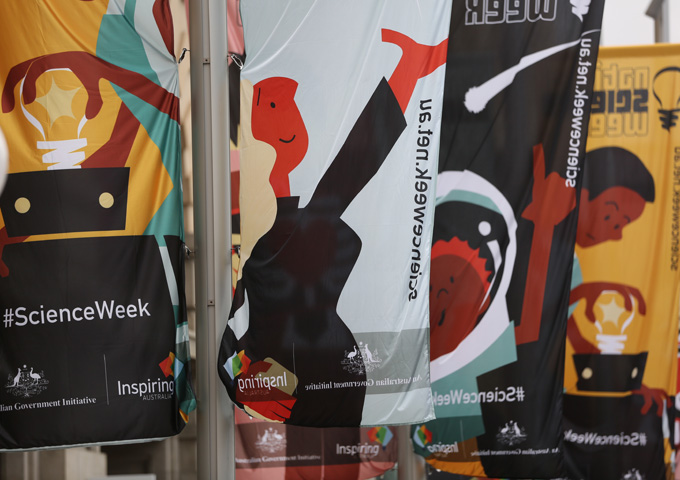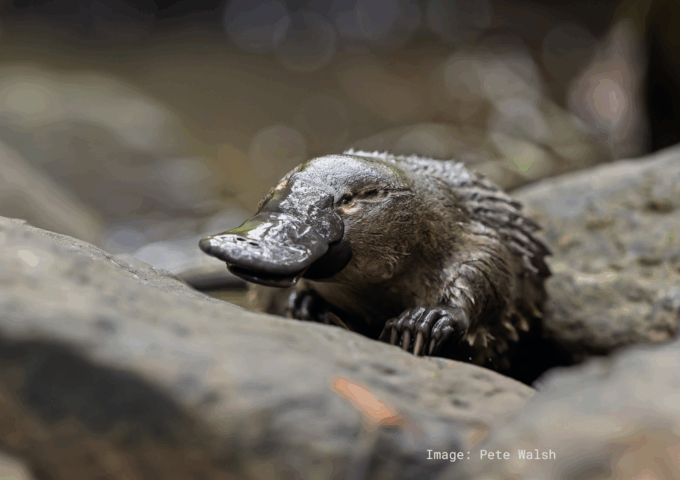
 When I first started volunteering at the Queensland Museum I was given a box full with hundreds of thousands of very tiny fossilised bones known as ‘microfossils’. These fossils belonged to a range of small-bodied vertebrate species such as frogs, lizards, birds, bats, bandicoots, possums and rodents, just to name a few. These microfossils were excavated from a 100 000 – 5000 year old cave deposit in Colosseum Chamber at Capricorn Caves in Rockhampton.
When I first started volunteering at the Queensland Museum I was given a box full with hundreds of thousands of very tiny fossilised bones known as ‘microfossils’. These fossils belonged to a range of small-bodied vertebrate species such as frogs, lizards, birds, bats, bandicoots, possums and rodents, just to name a few. These microfossils were excavated from a 100 000 – 5000 year old cave deposit in Colosseum Chamber at Capricorn Caves in Rockhampton.
My job was to carefully sort through these fossils using fine brushes and tweezers under a microscope and identify what part of the skeleton they came from and what species of animal they belonged to.
What I didn’t know at the time was that I was essentially sorting through fossilised owl vomit. Owls would hunt their prey at night and bring them back to the cave to consume their meal. The bones are the undigested parts that owls regurgitate into pellets and become incorporated into the cave floor deposit over several thousand years. This is where my passion for microfossils first began.
These small fossil animals, ‘microfauna’, are very helpful when trying to understand the palaeoecology and environment thousands of years ago. In 2012 my colleague, Dr Scott Hocknull, and I, discovered new fossil deposits at Capricorn Caves. As I was digging through sediment in a cave chamber I first pulled out a fossilised tooth belonging to a bandicoot that had lived in the rainforests that once spread across eastern Queensland.
Similar rainforest deposits have been found at the nearby Mt Etna Caves National Park. Both Mt Etna and now Capricorn Caves contain the only known Quaternary rainforest vertebrate fossil record in Australia.
Nearby we scrambled into a small chamber under a false floor and were amazed at what we saw above us. Our torches lit up a cave breccia that had cemented thousands upon thousands of bones into rock over several thousand years. This breccia contained fossils of the pig-footed bandicoot, a recently extinct species of bandicoot that once thrived in arid central Australia.
For the first time at Capricorn Caves we had found evidence for a faunal succession from the oldest rainforest (500 000 – 300 000 years ago) through to an arid environment (250 000 – 205 000 years ago) and finally to a mesic forest environment similar to today (100 000 years ago – present).
However, microfossils don’t just occur in caves. We have found microfossils from a site in tropical north Queensland that preserves Australian megafauna fossils. Studies from sites in northern Australia, including Capricorn Caves, are important as we are finding that tropical fauna and flora do not adapt well to climatic change as can be seen with the deterioration of the wet tropic rainforests and the Great Barrier Reef. I have also found new arid zone microfossil deposits from the Eulo Springs super-group in south west Queensland.
We were surveying an area that preserves hundreds of bones from the world’s largest marsupial, Diprotodon optatum and other megafauna. As I was collecting pieces of shell from a fossilised turtle, a very tiny bone caught my eye. It was a fossilised gill cover from a fish. Excited by this find I continued digging and then picked up something I was familiar with, a rodent incisor. Just like the cave deposits we found freshwater snails, fish, frogs, lizards, snakes, waterfowl, small mammals, bandicoots and rodents. These findings give us an indication there were once megasprings and wetlands capable of sustaining a wide range of animal life including large aquatic vertebrates, such as crocodiles, in arid zone Queensland.
This is why I have a specific research interest in microfauna representing a variety of Australian palaeoecologies such tropical rainforests, woodlands and arid zone springs. These sites preserve fossils from the Quaternary Period, a time of major faunal reorganisation, turnover and extinction due to environmental changes initiated by severe climatic change, human activity and the arrival of new apex predators in Australia.
Research on these collections can compare the responses of Quaternary faunas and their environments to similar climatic changes across vastly different habitats and geographical areas, in particular studying the impact of aridification on the Australian continent.
Guest blog post by Rochelle Lawrence, Palaeontologist at Capricorn Caves and Research Assistant in Geosciences at Queensland Museum.






